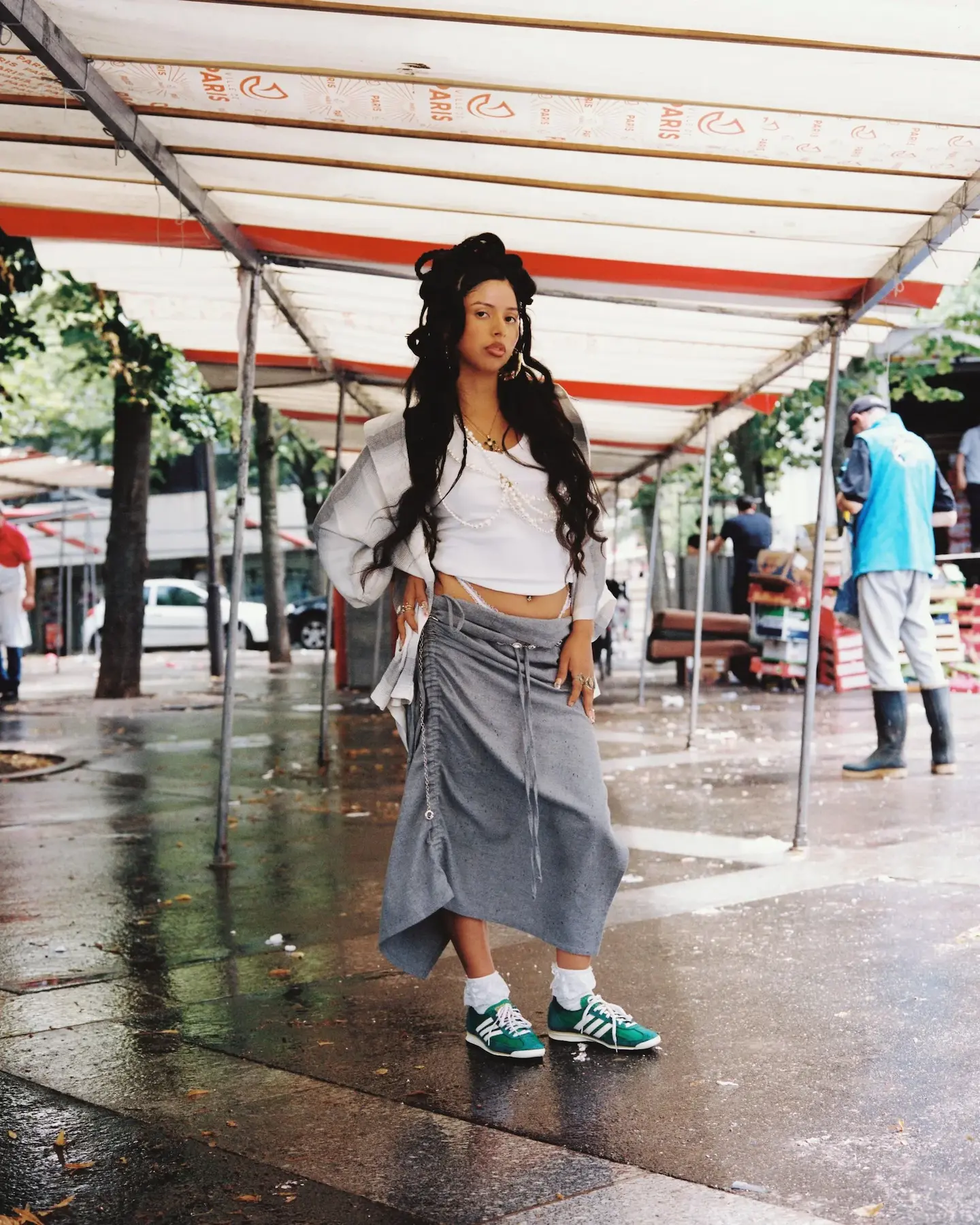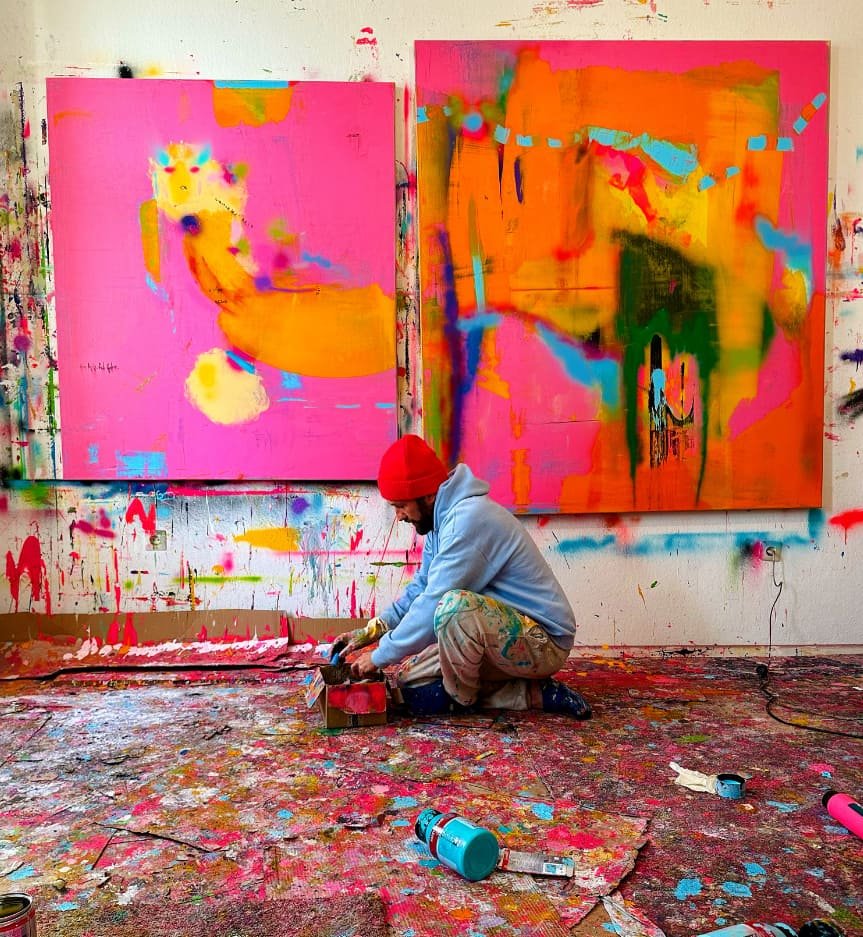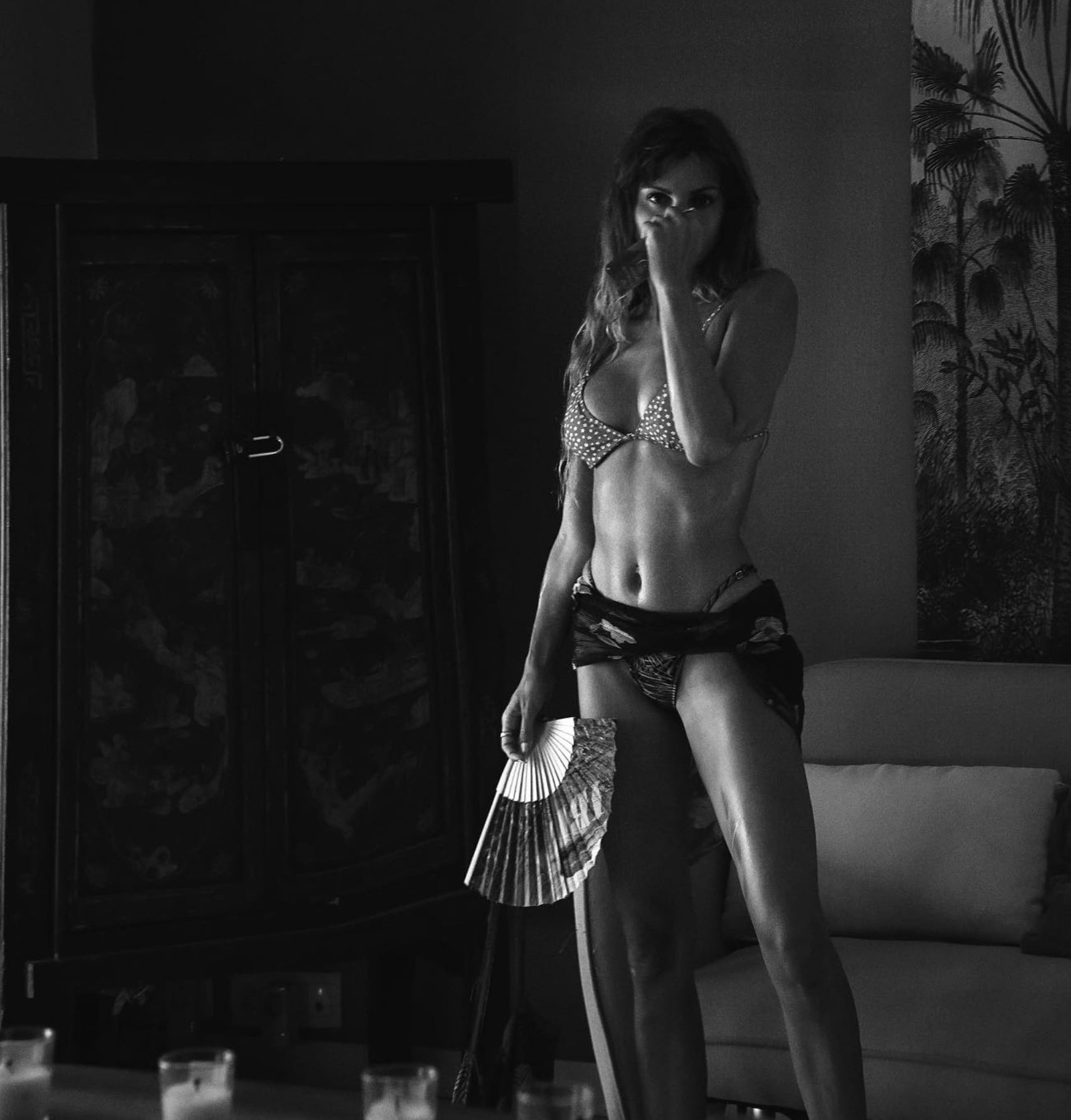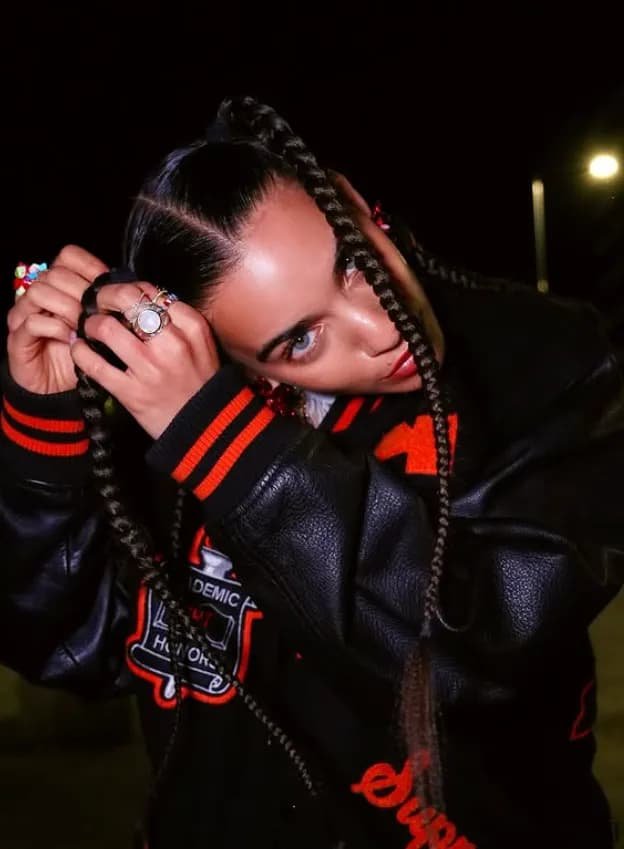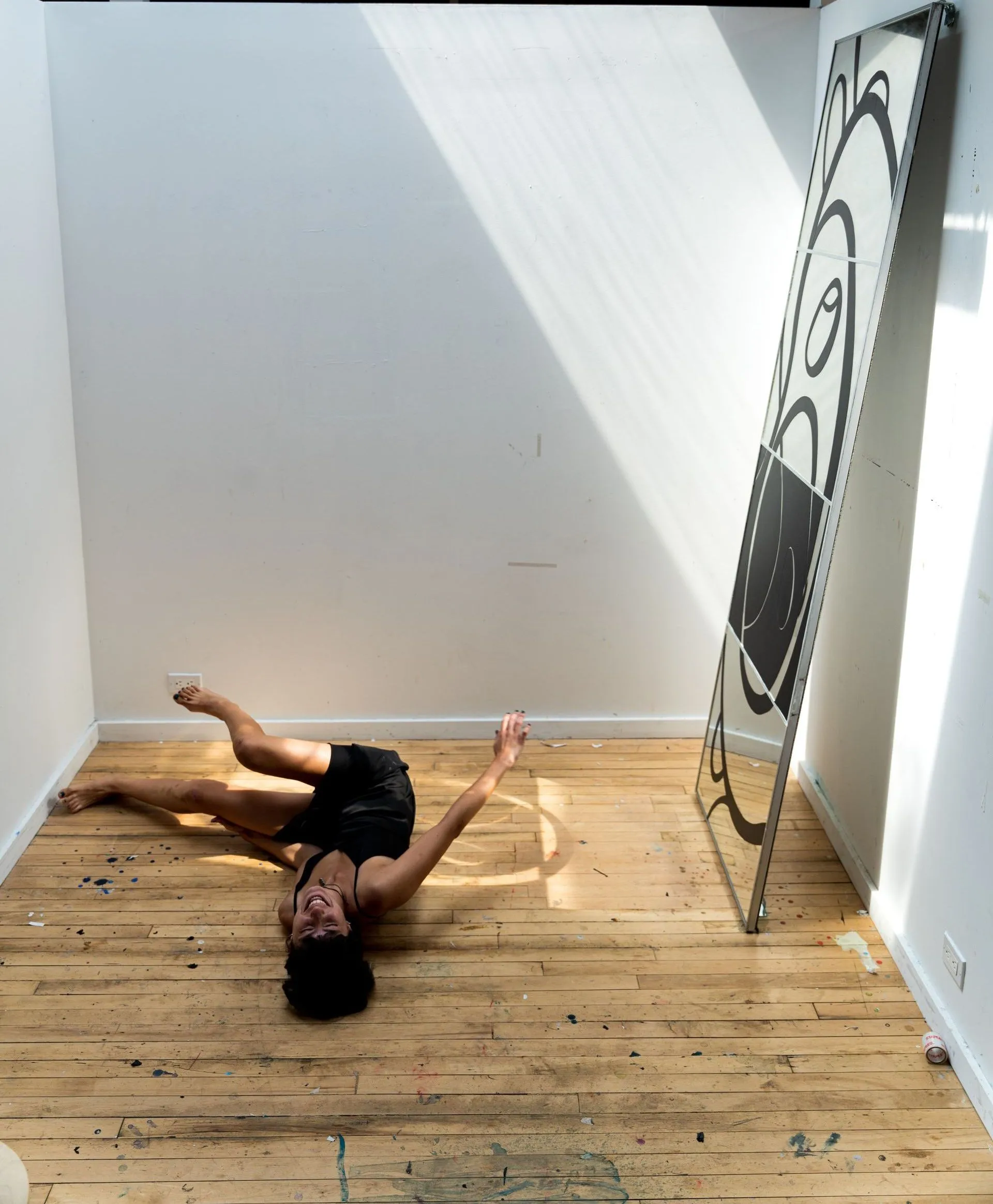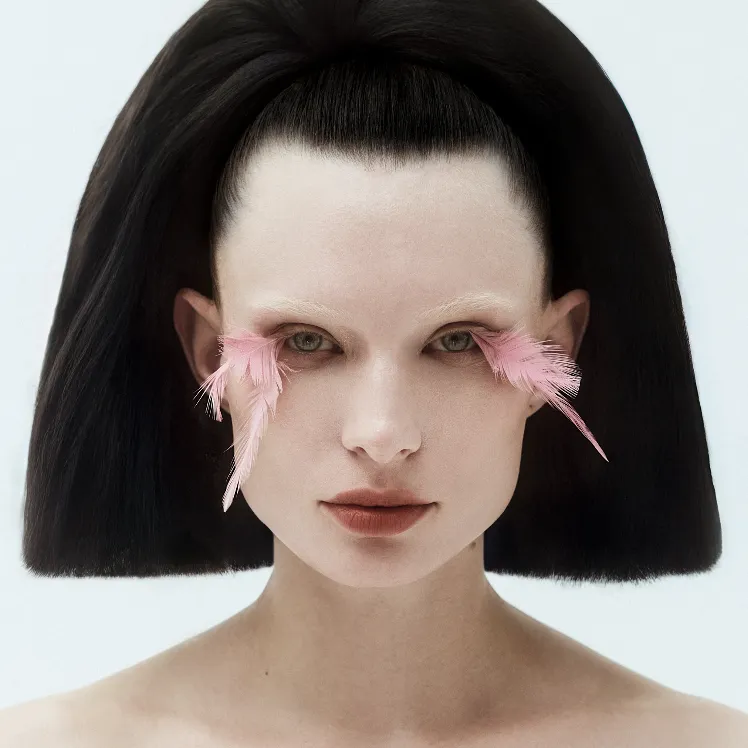Who is Claudia Rivera? And how did Crocoqueen come to be? Do you remember the moment that artistic identity first took shape?
Claudia Rivera is a French-Peruvian artist—born in Paris to Peruvian parents.
I always say that my work is about making my community feel alive and present in Paris, whether through events, editorials, social media content, or exhibitions. Crocoqueen was born from that cultural journey—it started as a nickname my friends used on Instagram, but over time it became my artistic name, an essential part of me. For me, Crocoqueen is the space where I allow myself to be free, bold, and fearless in my creativity; while Claudia is my more intimate, shy, and sensitive side. I feel that one protects the other, and together they enable me to exist and tell my story honestly—between France and Peru, between the personal and the collective.
Your projects always convey a vibrant Andean energy, yet also urban and global. How would you describe your visual and aesthetic language?
To me, my visual language is born from that crossroads: being the child of migrants, growing up in Paris with my heart in Peru. There’s something deeply Andean in the colors, symbols, and the communal, emotional connection, but at the same time all of that blends with urban, digital, global influences. I’m drawn to playing between the intimate and the collective, the traditional and the contemporary—creating images that celebrate my people, our roots, and how we reinvent ourselves in the cities where we live. My aesthetic is very emotional, sometimes a bit raw, but always infused with a deep love for who we are and everything we carry inside us.
What does it mean to you to be a Latin American creative living and working in Europe? What contradictions or gifts does that bring?
For me, it’s both beautiful and extremely challenging. It means constantly resisting and fighting for space—because nothing here is built for us; nothing is waiting for us. But that’s precisely the beautiful part: everything is there to be created, and it’s us—our generation—who is doing it.
It’s a constant contradiction: feeling like I belong neither here nor there, having to explain myself, justify myself, break prejudices. Yet at the same time, I know it’s a tremendous creative force. It allows me to carry my roots, heritage, and family with me—and blend them with what I experience here to create something new, something that truly belongs to us. Being a Latin American creative in Europe is about opening spaces that didn’t exist, telling stories that weren’t heard, and above all paving the way for those who come after us to dream bigger and fear less.
We know Paris can be tough but also deeply inspiring. How has this city influenced you as an artist?
Paris is a tough city—it demands a lot of you, and sometimes you feel there’s no room for someone like you, especially coming from a migrant family. But at the same time, it’s incredibly inspiring. You grow up surrounded by countless communities and diverse cultures sharing the same small space, and that’s beautiful. From a young age, you learn to navigate between worlds, listen to stories, share codes, and blend identities. That has been a huge gift as an artist: it taught me to see the world with more complexity, to find beauty in intersections and what doesn’t quite fit. Paris has made me strong, it has made me dream big, but above all, it has shown me that when there’s no place for you, you can invent one—surrounded by your people.
Which creative influences have nourished you? They might be artists, songs, places, or even foods.
My greatest inspirations are my family and close friends. Everything I create originates from them—from our shared stories and daily connections.
What was the first project that truly felt like yours? What made it so special, and how did you get noticed?
My first project was Nanaykuna in 2022, born from the desire to highlight Latina women in France. It combined photography and an event. That’s when I realized we needed these spaces—that there was a real need to represent ourselves, share our stories, and build community. It was the project where I first felt that my voice and those of my community belonged.
Many of your works feel like visual rituals. How do you incorporate your cultural roots into each project without falling into cliché?
I strive to stay as real as possible. My projects don’t arise from an aesthetic search or a desire to represent something “folkloric.” They are a direct extension of who I am, my history, and what I carry within me. I don’t think about “incorporating” my roots—they’re already part of me, and they naturally appear in what I create—in the colors, emotions, references, even wounds. For me, the important thing is to speak from a place of honesty, because when something is genuine, it connects without needing to be forced or become a cliché.
If your aesthetic were a playlist, what three songs couldn’t be missing?
“No podrás olvidarme” by Los Apus
“Siempre Seré” by Tito Rojas
“La Ritournelle” by Sébastien Tellier
(laughs) I love love.
What has been the greatest challenge you’ve faced in the European creative world? Making a living from it is essential to stay in the industry and life in general. Was the journey long to get there?
The biggest challenge has been earning a living doing this. Creating is beautiful, but sustaining it financially—especially coming from a migrant family—is another story. I don’t have a network or financial backing; everything has been built piece by piece, through pure effort. It’s been a long journey (and it still is), filled with doubts and moments when I thought about giving up—but also full of learning and growth.
Tell us about Amaru Agency. How did this collective/agency start, and where is it headed?
Amaru Agency was born from a desire to create space to showcase Latin American creatives in Europe—to tell our stories in our own voices. It started as a small, intimate project and gradually grew into an agency that combines creative direction, production, and cultural representation. My dream is for Amaru to become an international platform, connecting communities and opening doors so that more artists of our generation can shine, be seen, and make a living from their art.
Do you have any routine or ritual before starting a creative project?
Honestly, I don’t have any routine or ritual. I just dive in, letting ideas and emotions guide me, trusting that the process will take me where I need to go.
What upcoming projects are you excited about? Is there anything you can share that you’re particularly thrilled about?
I can’t reveal much yet, but there are many beautiful things coming—things that excite me deeply. I’m in a moment of intense creation and growth, so soon there will be news.
What exhausts you about this world, and what lifts you up?
Injustice.


